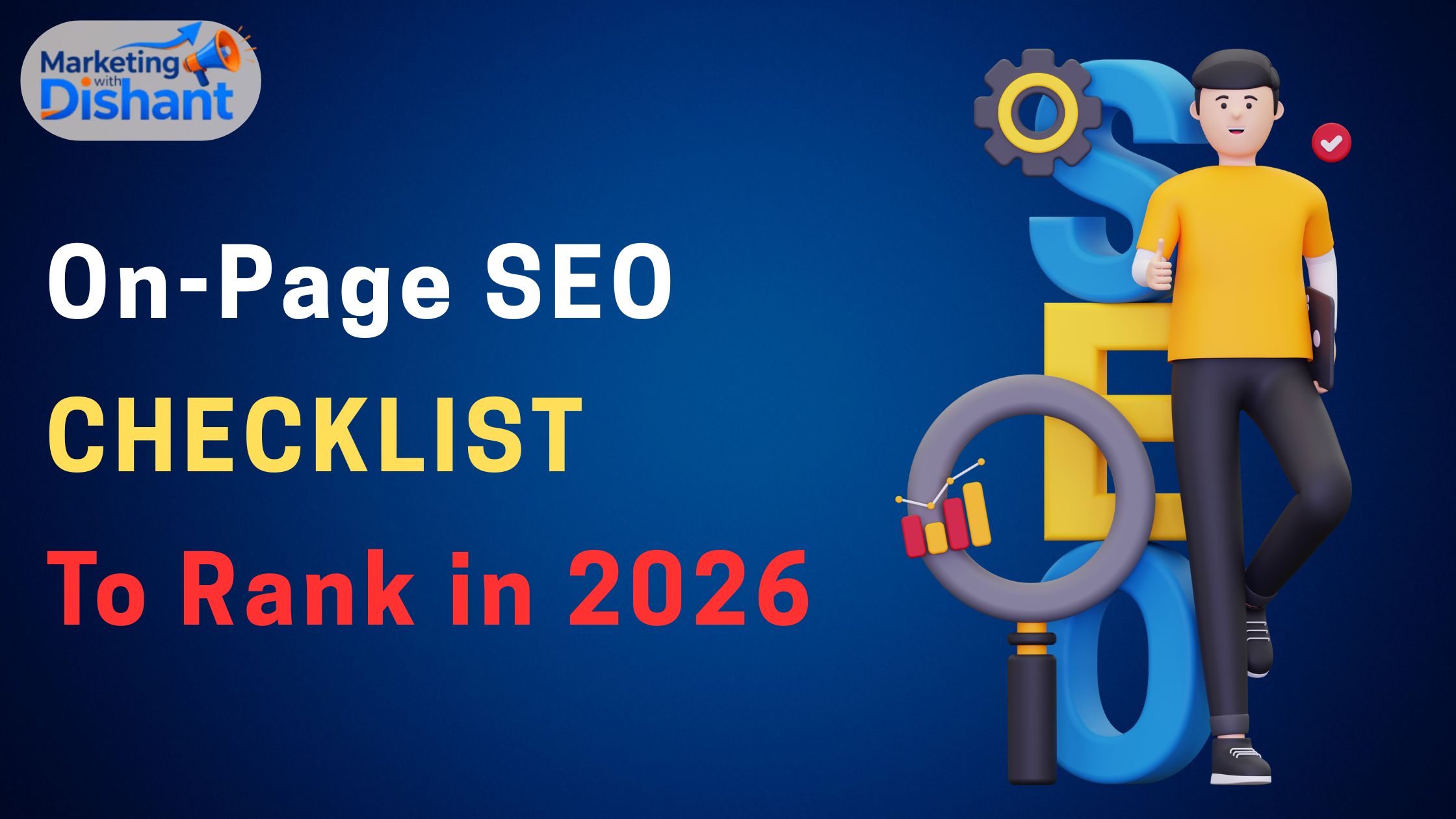On-page SEO is one of the most important parts of improving your website’s visibility on the Google Search Engine results page. It simply means optimizing the content, headings, and structure of your web pages so that search engines understand your page easily.
If your goal is to appear on the first page of Google, following an on-page SEO checklist is the first step.
Before starting, I would like to share a bit about my personal SEO journey. I started working on website SEO during my college days, and in this blog, I will be sharing an on-page SEO checklist based on my past experience.
The following checklist has been modified according to what I have learned over the years.
By following these strategies, you can easily improve your website’s visibility in Google’s SERPs. Make sure to implement all of the following changes correctly on your website.
Why You Need to Focus on On-Page SEO
On-page SEO helps search engines and users understand what your content is about. When your website pages are properly optimized, Google finds it easier to crawl, index, and rank them.
Let’s understand with an example. Imagine you wrote a great blog post about “Influencer Marketing Tools” but didn’t use proper title tags, headings, or internal links.
Google might not fully understand what the page is about. That’s why focusing on basic on-page SEO checklist points like focus keywords, meta title, and meta descriptions, and content structure is so important.
A well-optimized page improves your click-through rate (CTR), user engagement, and dwell time and all of which are signals that can help you rank higher.
Can You Rank on Google Without Doing On-Page SEO?
In short, it is almost impossible to rank on Google without properly doing on-page SEO. Even if your content is good, Google’s crawlers rely on page signals like meta title, meta description, URL structure, and internal links to understand the topic.
Without these optimizations, your page may not appear for the right search queries. On-page SEO acts like a “map” for search engines; it tells Google exactly what your page is about and which users should see it.
Also, backlinks and off-page SEO are still important, but without strong on-page SEO, your site will not perform to its full potential.
Top 20 On-Page SEO Checklist to Rank on Google in 2026

Here’s the major top 20 on-page SEO checklist you should follow to rank better in 2026:
1. Use your main keyword in the title tag: You need to use your focus keyword in the meta title. Make sure to keep it short (Maximum 60 characters), relevant, and attractive.
2. Add your keyword in the first 100 words: It will help you if you put your main keyword in your blogs starting as it helps Google to identify the topic early.
3. Write a clear and engaging meta description: You need to place your target keyword naturally in the meta description. Don’t use complex words in the meta description.
4. Use only one H1 tag per page: There should be only one H1 tag that includes your main keyword.
5. Use H2 and H3 tags properly: You can use different headings like h2, h3, h3 and organize your content for easy reading.
6. Optimize your URL structure: You should keep the URLs short and readable (e.g.,/on-page-seo-checklist/).
7. Use internal linking: You can link to related posts like technical SEO, AI SEO, and other related posts to help Google understand your site’s context.
8. Add external links to trusted websites: If you include external links in content, it will help to improve your website’s authority.
9. Use images and add alt text: You can use images in JPG and WebP formats in your content, and can describe the image briefly using your keyword in alt text.
10. Write unique and helpful content: Always focus on writing new and unique content. Don’t copy other content or repeat content on your website.
11. Use bullet points and short paragraphs: You can explain your content in bullet points and short paragraphs, as it helps readers to stay engaged with your content.
12. Add FAQs at the end of your post: You can add FAQ’s to your blog post and content. It improves SEO and user satisfaction.
13. Add schema markup (FAQ, article): This is one of the important factors. Because Google bots majorly understand coding so adding different schema to your content helps your post appear as rich results.
14. Use call-to-actions (CTAs): Your content should encourage users to comment, share, or explore.
15. Focus on user intent: Always focus on user intent. You need to write content that directly answers searchers’ needs.
16. Include related keywords naturally: You can add related keywords in your content because it will help you rank for multiple terms.
17. Add your brand name at the end of title tags: To improve your brand visibility, you can use your brand name at the end of your meta title. For Example: “What is On-Page SEO | Marketing with Dishant.”
18. Use descriptive anchor text for links: You need to avoid anchor text like “click here”. Instead of this, you can use other blog keywords for anchor text.
19. Keep your content fresh: Always update your existing and old articles regularly for better rankings because Google prefers fresh content.
20. Make sure your content is mobile-friendly: Most users search on smartphones, so you need to design your website accordingly.
If you follow this on-page seo checklist on your website, then it will give your blog posts a strong on-page foundation and help Google understand your content more effectively.
The Final Words
On-page SEO is not about doing everything at once it is about consistency and clarity. Start by optimizing one post at a time using this checklist. As you apply these steps, you will notice improved rankings, better engagement, and more traffic.
FAQ’s About On-Page SEO
Can you rank on Google without doing On-Page SEO?
No, you can’t rank effectively without on-page SEO. Google needs signals like title tags, keywords, and internal links to understand your page and match it with the right audience.
How often should I update my On-Page SEO?
At least once every 3 to 6 months. Updating meta titles, related keywords, and internal links helps maintain your rankings.
What’s the difference between On-Page and Technical SEO?
On-page SEO focuses on your content and structure, while technical SEO deals with site speed, crawlability, and indexing.
Does AI SEO affect On-Page SEO?
Yes, AI SEO tools can help you optimize keywords, content readability, and user intent for better rankings.
What is the ideal URL structure for SEO?
Keep your post URLs short, relevant, and keyword-focused. You can read more in our URL structure guide.

